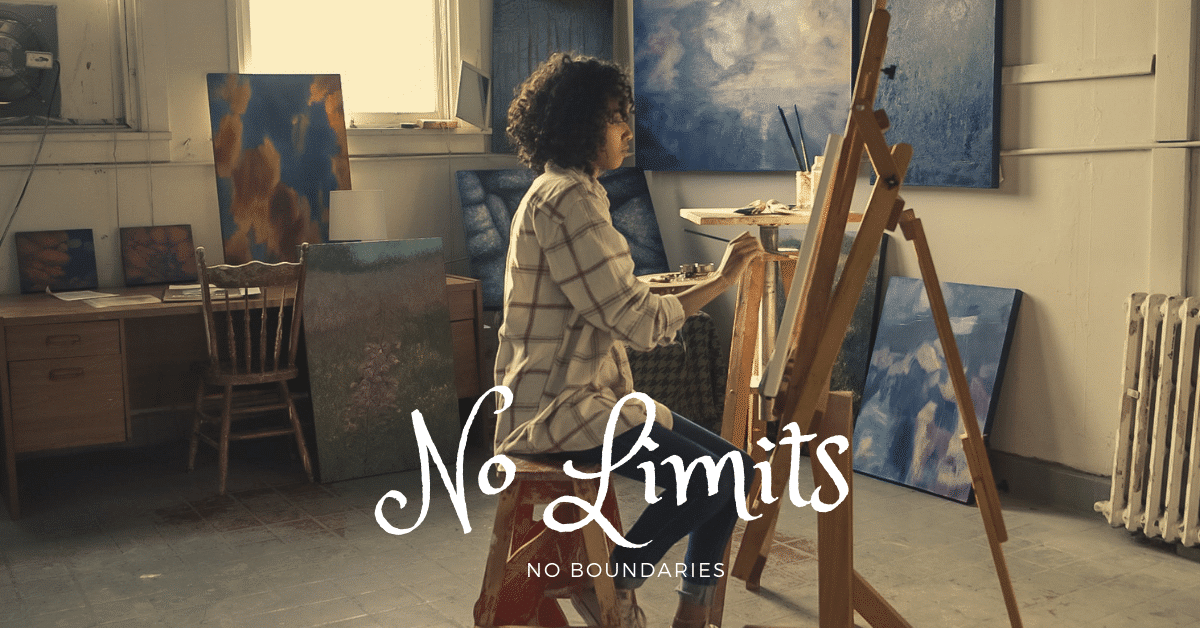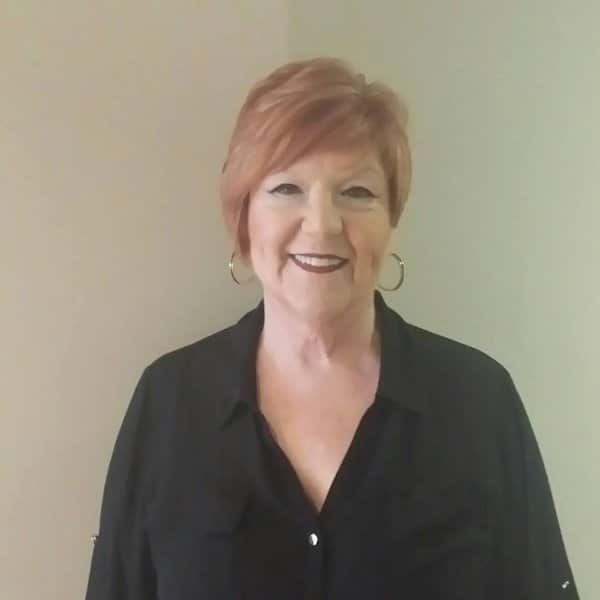Throughout CHF’s year-long Business Accelerator, we are in constant communication with our Fellows and frequently request their feedback so that we can make the program even better. As part of this process, we compiled some of these artists’ recent questions, and asked Daniel DiGriz, our educational and marketing director, to share his expertise and perspective. In this Q&A, Daniel tackles a range of topics, from how to generate sales leads and make the most of your PR successes, to the real reason artists should develop Investment-Grade Proposals.
Q: How long should it take to build a sustainable art business?
“…The story of being passively discovered on the sheer merits of your work ought to be written by the Grimm brothers or Hans Christian Anderson, complete with a fuzzy duckling and a kid with magic beans…”
DD: A lifetime—that’s the honest answer. It will never sustain itself without you. The other answer is that it varies, but it’s less time than you might think.
What is sustainability? Is it sustainable if you don’t yet have the income you really want, but you’re on your way to that goal?
Sustainability is based on three things: 1) a business infrastructure that’s in place and is consistently and intelligently utilized; 2) the quality of the art you’re creating; and 3) how much of that art you can produce free from the control of others. Lots of brilliant visual artists bank on “build it and they will come,” but they die penniless, with a basement full of masterpieces. Similarly, lots of artists make brilliant—even popular—art, but their livelihoods are siphoned off by too many people whose hands had no part in creating it.
The determining factor, above all, is whether or not your enterprise has the earmarks of a professional business. Are you deliberately and consistently connecting with an audience and creating a good story around your work (marketing)? Are you methodically nurturing and growing your individual contacts and relationships (sales)? Are your protecting your work legally (contracts and copyrights)? Are you consciously growing a brand (your own signature kind of work)? Are you tracking where your bread is buttered and what generates the most butter (financial)? Are you aiming big and trying to impact the world, versus hiding out in the studio? Are you working with others in such a manner that drives them to say, “I enjoy collaborating on projects with this artist because s/he is professional about the work”?
Once these steps are introduced, become real, and stick, THAT’S the moment your business is sustainable. The rest is simply volume and income, and those are exponentially easier to grow if the infrastructure is present and sturdy.
Q: What are some good sales techniques?
DD: We cover a lot of that in our Accelerator sales electives, but one thing I don’t see enough artists doing is “social selling.” That means prospecting within social-media sites such as Twitter, deliberately recruiting that audience, and telling an ongoing and overall story really well, punctuated with lots of content (e.g., photos, thoughts, etc.).
 You should also be nurturing the minds of the people you are about to contact, and then reach out to them (e.g., through direct messaging, etc), gently, thoughtfully, and consistently over time. There’s no such thing as easy sales.
You should also be nurturing the minds of the people you are about to contact, and then reach out to them (e.g., through direct messaging, etc), gently, thoughtfully, and consistently over time. There’s no such thing as easy sales.
Artists tend to do what most entrepreneurs do: they choose the easiest thing in the sales bucket—maybe an art fair or something else. But “easy, done well” isn’t necessarily as effective as “hard, done well enough.” Regardless of the technique, there is no substitute for methodical, deliberate, careful selling, and the technique won’t matter if you don’t apply it that way.
This is the secret reason some artists never get where they want to go. They point to other artists who’ve (seemingly) made it simply by painting or sculpting alone. What they fail to realize is that for every one of those artists, there are 100 more like them who starved by going that route—and a significant percentage of those who “effortlessly succeeded” actually faked how easy it was for them. Many of the “effortlessly successful” artists are actually shameless self-promoters, schmoozers, and some of the best salespeople you’ll ever meet, and like the best salespeople, they deny it. Or perhaps they’ve even forgotten how adept they’ve become.
The story of being passively discovered on the sheer merits of your work ought to be written by the Grimm brothers or Hans Christian Anderson, complete with a fuzzy duckling and a kid with magic beans. That myth is one of the reasons so many artists sign their lives away—ceding their labor, rights, and the bulk of their profits to work as employees on bad contracts—as they try to make the fairytale a reality.
The truth is that out of nothing, nothing comes. Art is a business (for some folks anyway, even if YOU don’t treat it that way), and a successful business requires a commitment to sales that goes beyond technique.
Q: How do I find the customers I need? Are there any common steps or resources you’d recommend for identifying leads?
DD: Getting leads into your pipeline is fun. When you’re starting from zero, social media is one of the best sources of leads. Why? Because people self-identify according to interest, habits, affinities, and so on, and because it’s easy to interact with them in a multitude of ways. You can follow them, share their stuff, share stuff with them, message them directly, and more.
Beyond social selling, there are tools like Nimble, which not only serves as a CRM (contact resource manager) to track contacts and provide a configurable pipeline), but also lets you find, research, and cull leads.
LinkedIn is a really powerful tool for starting to research certain kinds of leads, and most CRMs (including Nimble) will let you import a list of your actual LinkedIn contacts—once they go from being leads (meaning that you’ve identified them as potential contacts) to being actual contacts.
Q: What type of marketing vehicle is more likely to make you notice, follow, and maybe even buy an artist’s work: an art review in a magazine, an exhibition at a well-known gallery, a social-media post, or some other vehicle?
“…I can’t imagine a large grant going to an artist who can’t explain how it’s going to be used. No grantor wants to see their funds spent on a weekend in Vegas…”
DD: Any or all of these might be effective for a given individual, so it’s easier to think of them as a chain. There’s a modern marketing concept called the Zero Moment of Truth (ZMOT). In part, it means that by the time someone purchases something these days, they have already interacted with that thing in multiple ways (e.g., input from friends, sightings on social media, an email about it, an article they read, etc.) All of those interactions help, and the decision to purchase that item or service has likely been produced by the total effective frequency of seeing and hearing the same story, value, and/or message about it from different sources. You may never sell a single thing “because of” a Facebook post, but you also might never sell it without that Facebook post.
If I were to rank these efforts in order of likely effectiveness, using no other information, I would start with direct outreach (selling), which has the highest potential impact, followed by advertising or PR. (This assumes that sales, advertising, and PR efforts are carried out thoughtfully, consistently, methodically, and all the other “ly’s” that tend to make any marketing or sales activity a safer bet.)
After that—or actually, in support of that, because each step strengthens the others—I’d put website, social, and email content more or less in the same bundle.
Q: You often speak about potential “investors,” folks who will analyze my Investment-Grade Proposal (IGP) and be motivated to invest—or not—in my business. I assume you are saying this to get me to structure my practice as a business and think beyond the whole artist-gallery-collector framework, right?
DD: Yes and no. I can’t imagine a large-scale commission, such as a public work, that would rely solely on aesthetics. This is one reason some artists struggle to obtain those commissions. They’re saying, “Trust the beauty of my idea, but ignore the fact that I don’t have any of the earmarks of a reliable investment or any experience with managing a project of this magnitude in a professional manner.”
I’ll tell you one of the creative world’s dirty little secrets. The assignments don’t often go to the most talented creators, but rather to the most talented creators from among those applicants who demonstrate that they know how to carry off a project and work with people according to an IGP. Call it what you wish, but “investment grade” is shorthand for “something that makes people confident enough to part with large sums of money.”
I can’t imagine a large grant going to an artist who can’t explain how it’s going to be used. No grantor wants to see their funds spent on a weekend in Vegas. Not only is it advisable to structure a well-considered and digestible proposal that makes sense in the eyes of experienced “investors” (which is what grantors are), but you should also communicate with them through regular field reports. And it certainly doesn’t hurt to have previous examples of projects where you’ve done just that. I know that I’d certainly ask for these things before I handed over any of my money.
Q: In my experience, collectors usually care less about IGPs (and their attendant objectives and milestones) and focus instead on the art and its context. By buying work from an artist, they are “investing” in that artist so that the artist can keep making his/her art. I doubt that Philip Guston, Francis Bacon, or Jackson Pollock had VBOs (Viable Business Objectives); they presented their dream, and collectors either supported that dream or not, as these artists then tried to expand their art (which didn’t necessarily expand their businesses).
DD: I partly agree. Collectors either supported those artists or not, and if you are already happy with the response you’re getting and the life it generates for you, there’s not much we can teach you. Go forth and multiply your efforts.
But for every artist you mentioned, there are at least 100 who got “no’s” from collectors. And part of “the art and its context” IS the business viability of the artist who created it. An IGP is not designed to make a collector like you better. It’s designed to help you get more collectors, or more commissions that get you more collectors, or more PR that gets you more commissions, or achieve whatever other steps are pivotal to growing your business.
When you say “Jim the collector doesn’t care about my IGP,” you are boiling down the idea to an absurdity, and your argument devolves in the following way: ”Can’t I just make art and ignore the part about making the business sustainable, solid, and reliable? Can’t I just stay in the studio, and the rest will take care of itself?” The answer is: “If you can, then why are you asking me questions about sales and marketing?” Wishing will not make it so.
There are LOTS of factors that go into making any artist a global hit, some of which are like a lightning strike, purely accidental. (And yes, you can bank on accident.) But for every incredibly talented accident of history who became a fad—because of a certain mood, place, or moment in the culture—there are dozens of other artists who worked their butts off, contacting influential people and following up, planning projects, applying for grants, and engaging in a steady diet of self-promotion; those are the artists who made a living, became well known, and have pieces that hang in museums today.
So, if I were a betting man, I wouldn’t bet on the lightning strike. You can’t plan for lightning, but you can count on the conventional hard work that goes into being a successful entrepreneur. That’s what we why we ask you to put together an IGP.
Q: My show received a favorable review in a major news publication. What marketing approach would you suggest to help me build on that recognition?
DD: First, let’s go through what won’t help. It won’t help to share that article with everyone who’s on your email list and who follows your social-media feeds. Of course it is fine to do those things, and it’s especially good to put the article up on your website, but that’s not a plan for getting more of anything. The people who are already connected to you are not more likely to buy art from you because you were just written about—UNLESS (there’s always an unless) they are mainly interested in art as an economic investment; if they’re the kind of collector who buys a piece in the hopes of a financial windfall, then the article might push them in that direction.
When you’ve gotten some PR, the first thing you should do is leverage it to get more PR, by pursuing one or more of the following approaches (which may or may not succeed—there are no guarantees when it comes to PR):
- Engage an independent consultant to do press outreach for you so that you can get more press clips. One hit isn’t enough to say much about you, especially if it’s a review rather than a feature.
- Develop your overall story. What are you doing that’s disruptive? The audience needs a compelling reason to move beyond “the art is pretty and the artist is nice.”
- Capitalize on timing. Press outlets rarely care about a story unless it’s time-sensitive. There’s always another story ahead of yours, so linking yourself to a timely event, trend, anniversary, or some other happening is likely to be much more effective in the long run.
- Cultivate social PR. Major press clips can be buttressed by support from widely read bloggers and highly trafficked tweeters. Don’t ignore the social “press”—reach out to local art and city bloggers and tweeters, and invite them to your studio for a “press tour.”
Q: The members of my audience are intelligent and refined; they want to be approached with discretion. What kinds of calls to action (CTA) are suitable for the luxury market (i.e. not of the “free coffee mug” variety)?
DD: There isn’t one single right answer, but you’re right, it’s not a mug. If your goal is to move them part of the way to a purchase of your art (which is what many CTAs aim to do), give them what collectors often want: the intimate you. This requires the creation of a sophisticated, polished piece of content.
If you want to create something digital (which is cheaper to give away), it could be a video presentation that includes a virtual studio tour. It could be a “prospectus” that includes scenes of the art you’re actually creating, punctuated by your narrative, which explains what you’re doing, how you’re doing it, and why. If I’m buying shares in a resort hotel, I want a prospectus.
Whatever you end up doing, you need to think about the value that you are transferring. If your audience values greater contact/intimacy with the artist, provide that. If they value information about process, give them that. Maybe you offer them two free tickets to your intimate annual studio party. Brainstorming CTA ideas is going to yield dozens of possibilities, as long as you don’t prejudge the answers. Get colleagues involved in the process, and only cull the list after every last idea has been written down. Ideas beget more ideas.
Maybe it’s a drawing. Maybe you choose 12 people each year—on the strength of their answer to a particular question—and you invite them to a special gathering, to witness or be part of one of your works as it’s being created.
And be sure to think about what YOU get out of it. Is the goal to get them to physically interact with your art? Is it to give them greater insight into what they’re seeing? You should define both the give and the take.
Want to continue accessing valuable information about the business of art?
Help support CHF today by making a tax-deductible donation.









This is really helpful and I will be coming back to it from time to time